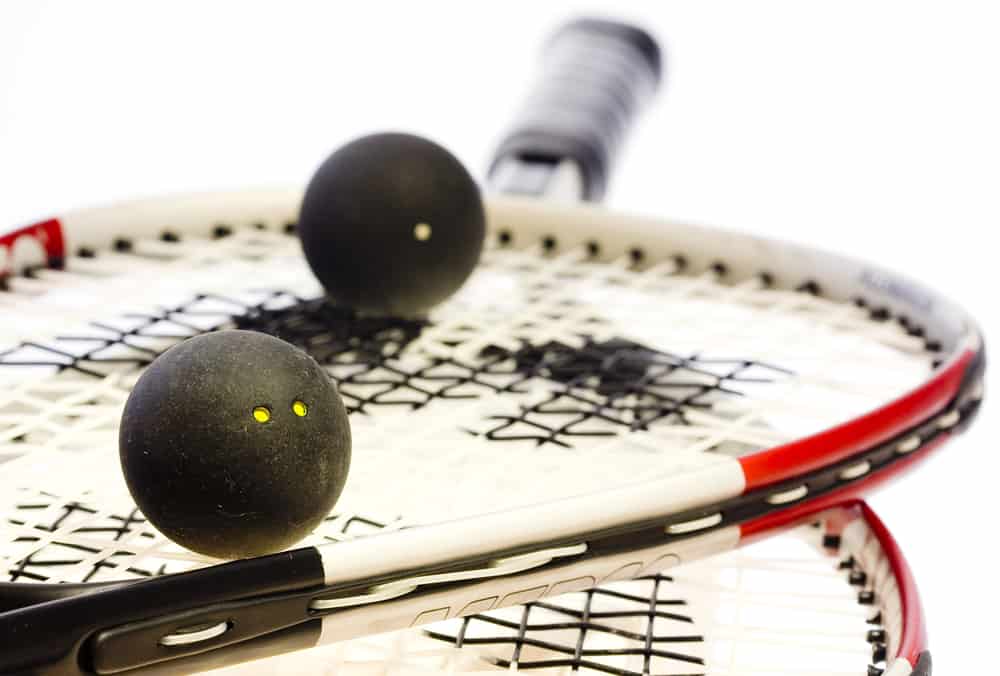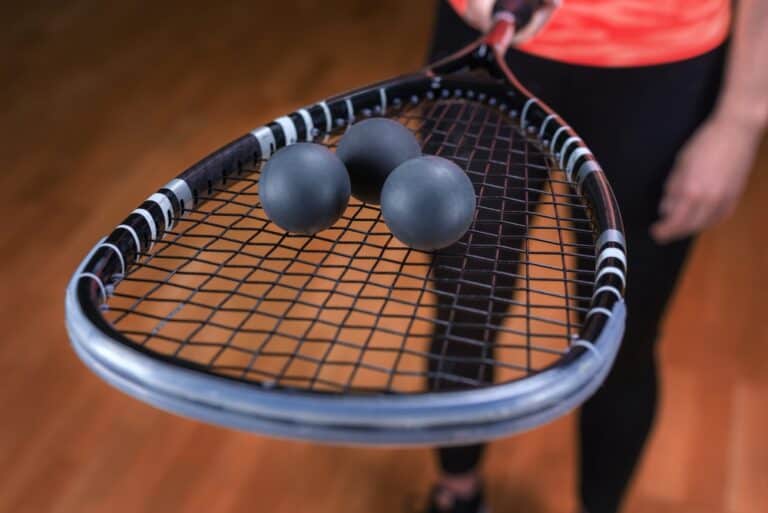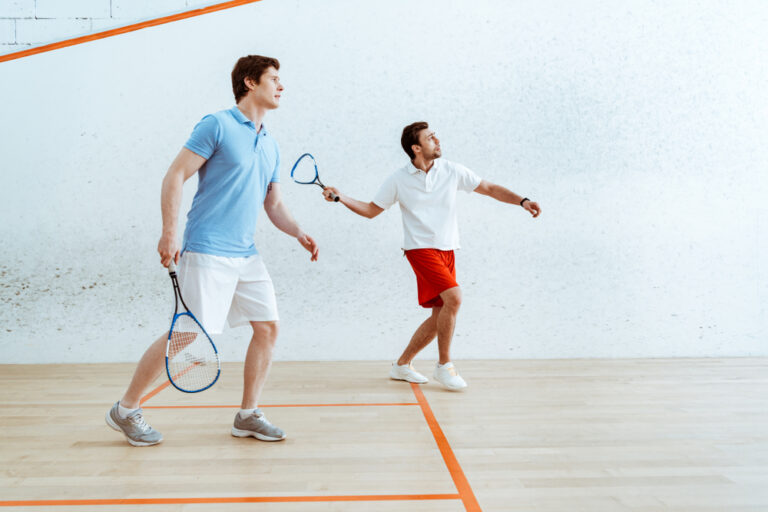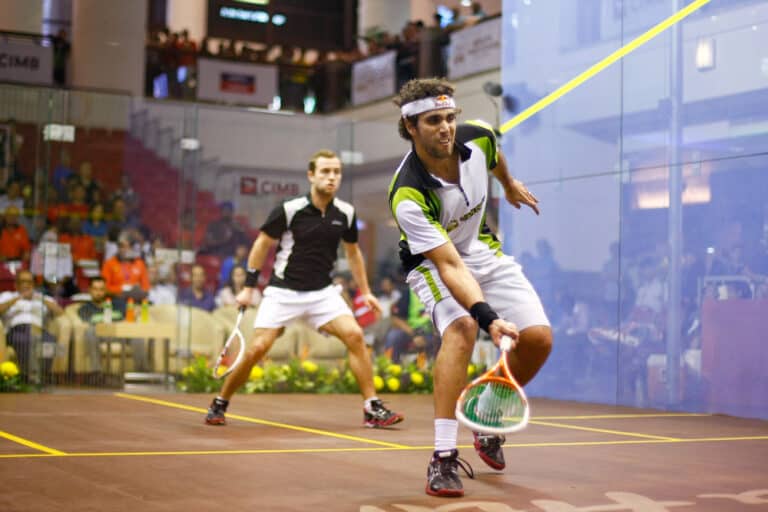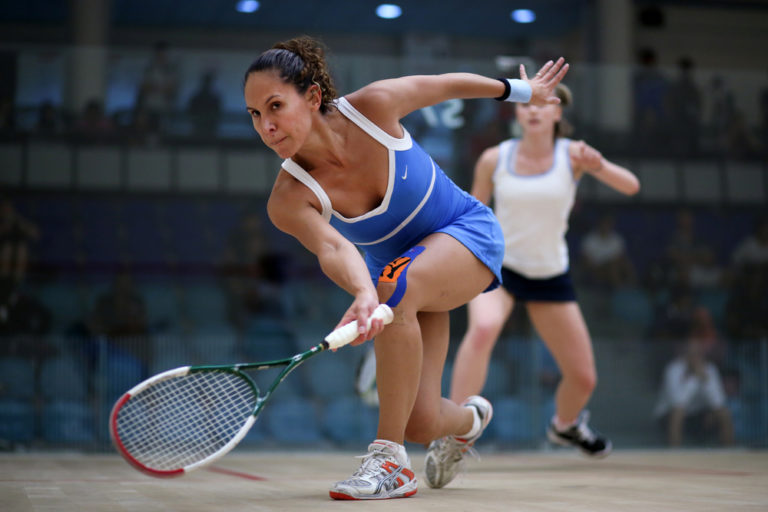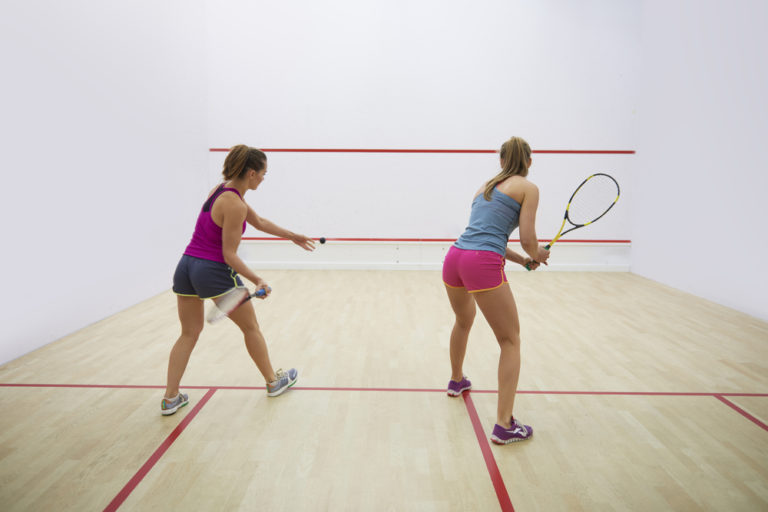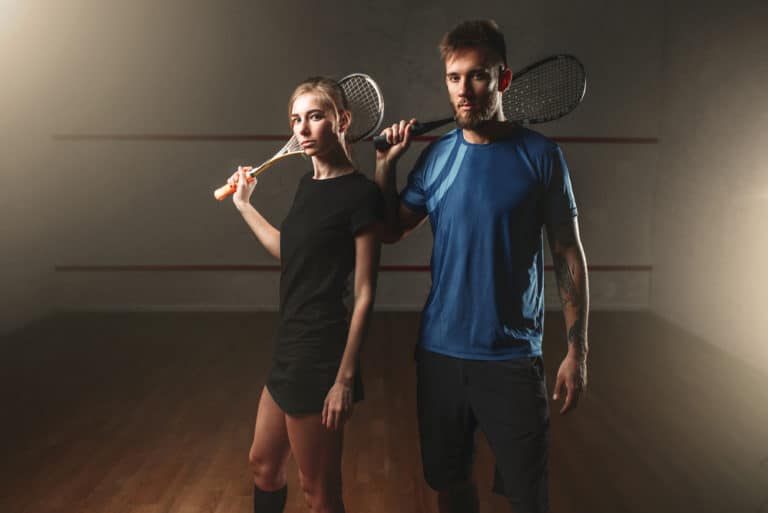Which Color Squash Ball Should You Use?
Squash is a fast-paced racket game that can be played by almost anyone. It is a fast passed and exciting game that requires some agility and skill, all of which can be taught. But learning all the different playing techniques can be difficult if the incorrect ball is used, it will simply take the fun factor out of the game. So, which color squash ball should I use?
There are four leading types of squash balls. The Blue Dot is for beginners starting out in the sport. The Red Dot is for intermediate players, and the Single Yellow Dot is for advanced players. The double Yellow Dot squash ball is used by professionals and in squash tournaments.
Read on to discover which squash ball is best suited for your level of play, why the ball must be warm and how long the ball will last>
How To Choose The Correct Squash Ball For You?
Choosing the correct squash ball will determine how you start off playing the game as a beginner. The most popular squash ball brand on the market is Dunlop, and for good reason. The Dunlop squash ball has unrivaled performance, a longer lifespan, and a more consistent bounce than its nearest rival. This is why it is the official squash ball for the PSA World Tour.
Different squash ball manufacturers may use other color Dots on their balls, but the Dunlop color code is the most common and the one we will focus on. Dunlop splits their squash balls into four categories: intro, progress, competition, and pro. So, let’s see the differences between the balls.
The Dunlop Blue Dot Intro Squash Ball
This ball has a single Blue Dot and is mostly used by beginner and junior players. It is the best choice of ball for someone new to the game and would like to learn while having fun. The Blue Dot ball is 12% larger than the competition ball (Single Yellow Dot) and has 40% more bounce than the Pro Ball (Double Yellow Dot).
The Blue Dot ball requires less time to warm up the ball before the start of play. It is much easier to use due to its increased bounce, size, and hang time (time in the air). This assists the beginner player in gaining much-needed confidence on the court.
The Dunlop Red Dot Progress Squash Ball
The Red Dot squash ball is mainly used by intermediate players and is the first step up from the Blue Dot ball. The Red Dot allows for a fun and fast-paced game, is well suited for recreational games, and offers a mid-tier competition characteristic. Squash coaches favor the Red Dot as it will offer a slightly more realistic training session than the Intro Blue Dot.
The Red Dot squash ball is 6% larger than the competition ball (single Yellow Dot) and has 20% more bounce than the Pro Ball (Double Yellow Dot). The hang time is less than the Blue Dot but more than the competition squash ball.
The Dunlop Single Yellow Dot Competition Squash Ball
The Single Yellow Dot squash ball was used as the official ball in professional squash tournaments up to 2001. The main difference between the Single and Double Yellow Dot squash ball is that it offers 10% more bounce. The Single Yellow Dot is used by advanced players as it allows for a slightly longer hang time than the Pro Ball.
The Single Yellow Dot ball is often used in colder climates and in open-air courts as the bounce will be affected by the cooler weather condition. The extra 10% bounce will improve the game’s quality and hang time and keep the ball warmer for longer. The Single Yellow Dot weighs between 23-25 grams and has a diameter of 39.5 – 40.5 mm.
The Dunlop Double Yellow Dot Pro Squash Ball
Since 2001 the Double Yellow Dot squash ball has been used as the official squash ball for tournaments. The ball offers very little hang time and almost no bounce and is favored by highly skilled and professional squash players.
Having the ability to play a wide variety of strokes is needed, along with agility, flexibility, strength, and a sound technique. The double yellow is the same size and weight as the Single Yellow Dot.
The Double Yellow Dot has scared many beginner players, often enough for them to give up on the game. This is due to many novice players thinking that the Double Yellow Dot is the only ball in squash. Most players will find this ball a challenge to play with, and it is best left to advanced and pro players.
Dunlop Squash Balls For Kids
The younger generation of squash players is ever increasing, so Dunlop has developed balls that will allow them to learn the game. These balls do not require very powerful backhands and still allow a significant fun factor while learning new techniques.
The Dunlop Mini Squash Fun Red Ball
The Mini Squash Fun ball is Red, has no Dot, and is large oversized. This ball is aimed at beginner kids between the ages of 5 to 7 years old who are interested in playing the game. The Mini Fun squash ball has a very high bounce and does not need to heat up to maintain it. Playing with this Red squash ball will help get the kids accustomed to the rules in a fun and entertaining way.
The Dunlop Mini Squash Play Orange Ball
The Mini Squash Play ball is medium oversized and is Orange in color. The ball has less bounce and hang time than the Mini Squash Fun and is aimed at kids between 7 and 10. This ball will aid kids in developing the finer skills needed on the court while allowing for longer and more fun games. Once the kids have reached an adequate level of play, they can advance onto the Dunlop Blue Dot Intro Squash Ball.
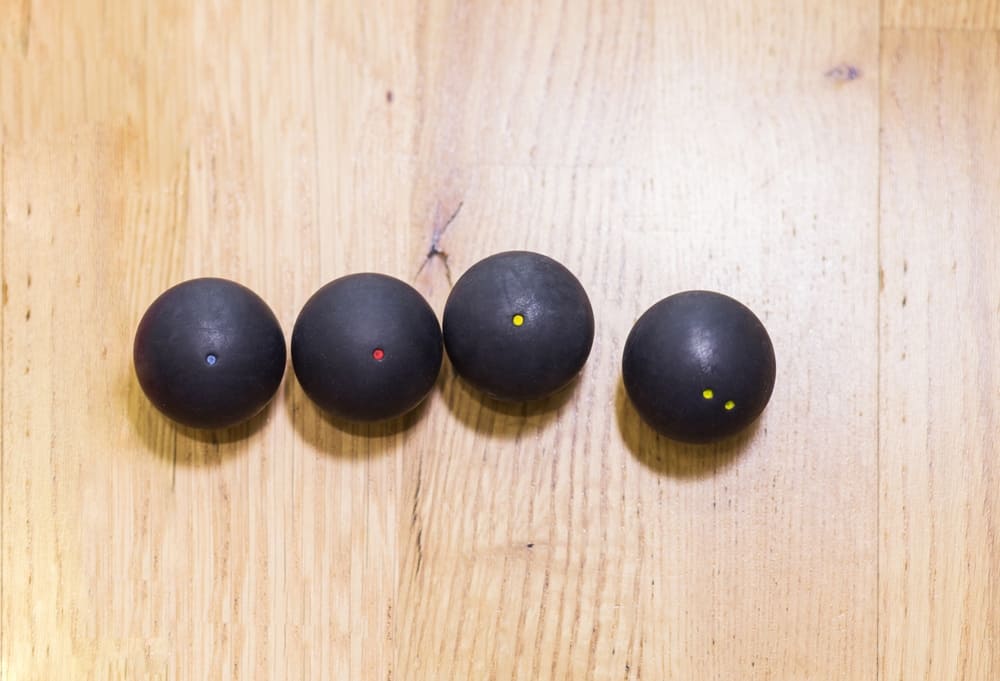
Why Do Squash Balls Need To Be Warmed Up?
The Squash ball needs to be hit against the wall for a few minutes for them to warm up before a game begins. A warm squash ball will bounce better than a cold one and will allow a more constant hang time. While hitting the squash ball against the wall, the air inside the squash ball heats up and increases the pressure. The warmth makes the rubber softer and more malleable, making it easier to keep its temperature.
How Long Do Squash Balls Last?
There is no-one set rule for how long a squash ball will last, as this will depend on many factors. These will be how hard the ball is being struck, the wall/floor surface, and the racquet strings being used. The first sign that the ball is beginning to perish will be degradation in the bounce.
Over time the air inside the squash ball will leak out, reducing the pressure inside and reducing the bounce. If the ball has any visible cuts on its surface, it should be replaced as the cut will eventually rip and split the ball open.
Conclusion
The most common squash ball brand is Dunlop, which offers four skill levels of balls. The Blue Dot is for beginner players, the Red Dot is for intermediate players, and the Single Yellow Dot is for advanced players. The Double Yellow Dot squash ball is used in all tournaments and is suited for professional and skilled squash players.

